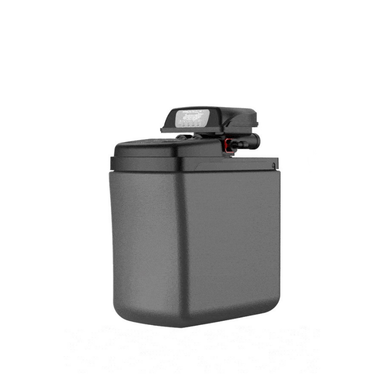Firstly, What is Hard Water?
Water deemed hard is characterised by a high level of dissolved minerals, notably calcium and magnesium ions. These minerals dissolve into the water as it moves through rocks and soil, gathering mineral content throughout its passage. The hardness of water is determined by calculating the quantity of minerals present per gallon, milligram per litre or parts per million (ppm) within the water.
Hard water is a widespread issue in UK homes, and many people ultimately turn to Water Softeners as the most effective long-term solution.
Primary Minerals in Hard Water
Water hardness predominantly stems from these primary minerals:
Calcium
Usually ranks as the most abundant mineral, known for creating scale deposits within pipes, appliances, and fixtures.
Magnesium
Typically found together with calcium, contributes to scale formation and can affect the performance of soaps and detergents.
Common Signs You Have Hard Water
There are quite a few indicators, many of which you are probably most familiar with ! Are these pictures something you recognise?
Over 60% of homes in the UK have hard water, around 16m homes !
Scale Build-Up on Taps and Appliances
Look at faucets, showerheads, and water-operated appliances such as kettles or coffee makers for the tell tale signs of white, chalky deposits, the residue from minerals when water evaporates. You have probably encountered the task of cleaning off the white, powdery residue in your shower, bathroom, kitchen and glassware.
Frequent Plumbing Issues and Reduced Water Flow
The presence of hard water can lead to plumbing complications like blockages or corrosion as minerals accumulate within pipes, leading to potential clogs and erosion.
Soap Scum and Residue in Kitchens and Bathrooms
In hard water, soap doesn't easily foam but rather produces a film that can deposit residues on sinks, bathtubs, and shower walls.
Damage to Clothing and Fabrics
Do your clothes feel like they lose quality? They may feel rigid, coarse, or lose their original colour brilliance due to mineral build-up in the fabric. If you have hard water in your supply, the only true remedy is installing a Water Softener System, which prevents limescale and protects your home.
How does a Water Softener work
A water softener operates through a process called ion exchange to remove minerals that cause water hardness, primarily calcium and magnesium ions. The key components of a typical water softener system include a mineral tank, a brine tank, and a control valve.
Here's a step-by-step explanation of how a water softener works:

Resin Beads
Inside the mineral tank, there are tiny resin beads made of polystyrene, which are negatively charged.
Ion Exchange
When hard water passes through the resin bed, the positively charged calcium and magnesium ions in the water are attracted to the negatively charged resin beads. The calcium and magnesium ions adhere to the resin beads, displacing sodium ions that were initially on the beads.
So ftening Process
ftening Process
As a result, the calcium and magnesium ions are trapped by the resin beads, and sodium ions are released into the water. The water that exits the softener is now "soft," containing fewer calcium and magnesium ions but having a higher concentration of sodium ions.
Regeneration Cycle
Over time, as the resin beads become saturated with calcium and magnesium ions, the water softener needs regeneration. This is typically initiated automatically by the control valve at specific intervals. During regeneration, the brine tank, containing a solution of salt (or potassium chloride for salt-free systems), is used to recharge the resin beads.
System Ready for Softening Again
Once the regeneration process is complete, the resin beads are recharged with sodium ions and ready to soften water again.
How big is a Water Softener
Mainly depends on the size of the house and residents. Most domestic softeners will fit either under the sink or in a kitchen cupboard with larger premises needing something bigger like a utility room, basement, or garage.
Do Water Softeners require maintenance?

Water softeners do require maintenance, but the tasks involved are generally straightforward.
Adding Salt or Potassium
For traditional ion-exchange water softeners, adding salt to the brine tank is necessary to facilitate the regeneration process. Potassium chloride can be used as an alternative for those concerned about sodium intake.
Monitoring Salt Levels
Regularly checking the salt or potassium levels in the brine tank is essential to prevent the softener from running out of the regeneration solution.
Cleaning the Brine Tank
Periodically, the brine tank may need cleaning to remove any build-up or sediment that accumulates at the bottom.
Can you Drink Softened Water?
Yes, drinking softened water is perfectly fine. The increased sodium content is typically minimal and well within recommended limits, posing no health risks for most people. Individuals mindful of sodium intake might regard this increased sodium intake as something to be mindful of however, the additional sodium present in softened water is usually minimal, potentially having a minor impact on overall sodium intake, especially since dietary sodium is predominantly obtained from food sources.

Does my Area have Hard Water?

*Source British Water
A staggering 65% of the UK relies on mains water categorised as hard. Obvious signs, such as frequent equipment failures, noisy boilers, diminished water pressure, and the accumulation of crusty deposits, point to the presence of hard water
You can quickly check your own levels using our Hard Water Calculator
Ready to Tackle Hard Water?
Explore our full range of high-performance Water Softeners designed for UK homes.



















